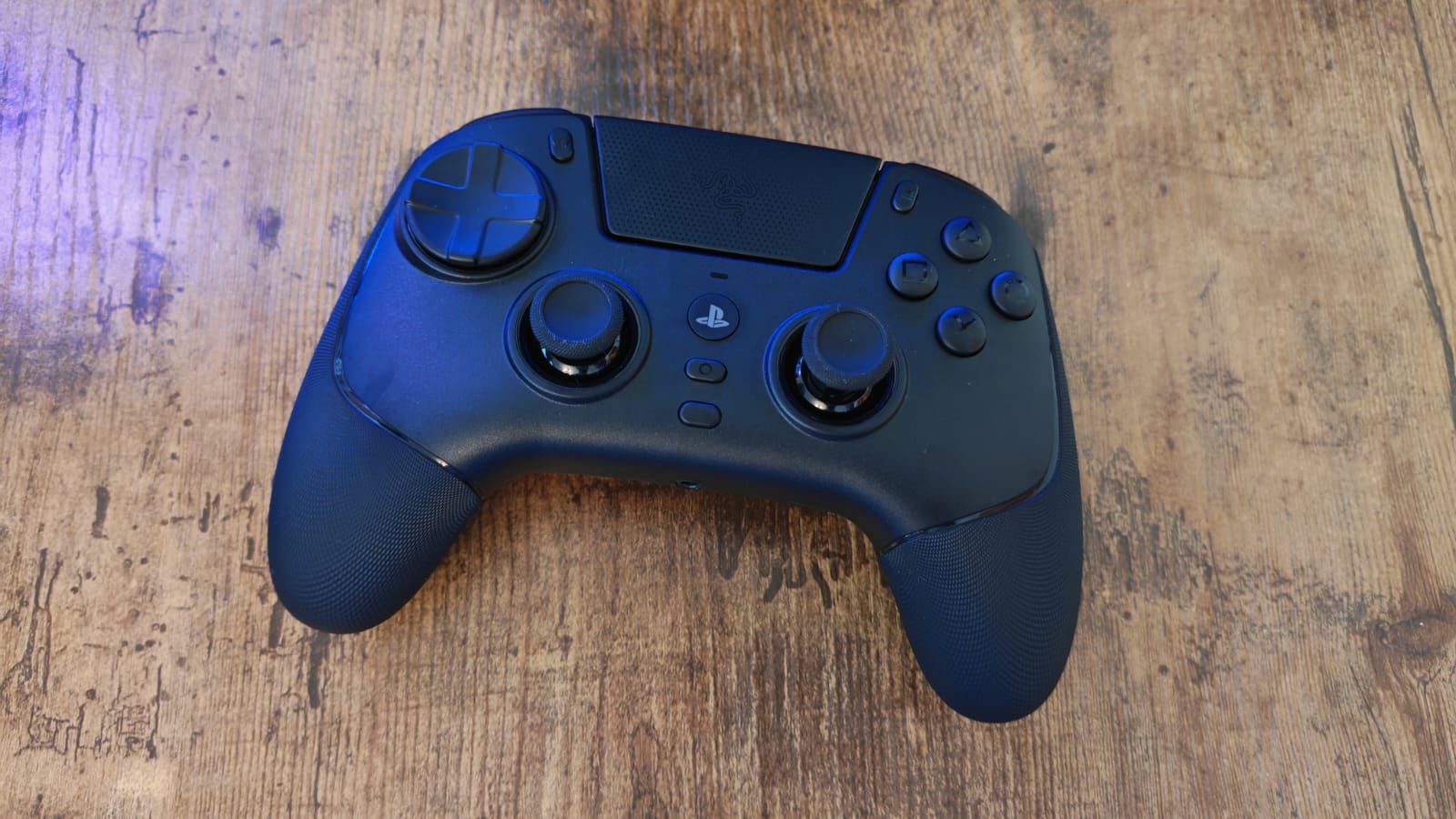GamesRadar+ Verdict
Unlike so many officially licensed PlayStation Pro controllers, this generation's Raiju feels authentic to PlayStation. This isn't a pro controller that's trying to bring an Xbox feel to PS5 players; it's a PS5 controller amplified into an absolute weapon of a controller. With six extra buttons, a similar speedy actuation to the Wolverine V3 controllers, and TMR thumbsticks, this is absolutely a new gold standard for competitive PlayStation players. That said, a lack of physical customization options and an absence of any rumble or haptic feedback hold the Raiju V3 Pro back. The blame for that lies at PlayStation's door, however, not Razer's.
Pros
- +
Symmetrical thumbsticks
- +
Speedy, clicky mouse switch buttons
- +
Longer grips than a Wolverine V3 Pro
- +
Six extra buttons for $199
- +
TMR thumbsticks
Cons
- -
PlayStation licensing means there's no rumble or haptics
- -
Lightweight feel
- -
Floaty D-pad
Why you can trust GamesRadar+
Razer's first officially licensed pro controller for PS5 held a lot of promise. The Wolverine V2 Pro never became my favorite gamepad though, because its back buttons were all over the place, its build quality felt like a Hasbro toy, and its price was through the roof. When it launched, its suite of features was hard to ignore, but compared to a burgeoning market of PS5 controllers that swiftly followed its arrival, it fell by the wayside, and Razer went back to the drawing board.
The original Razer Raiju was one of the very first officially licensed PlayStation 4 controllers, and it helped to bring a new wave of pro controllers to Sony's platform as well as the mainstream market. We haven't seen a Raiju launch this generation, and I'm so glad Razer kept it in its back pocket until now. You see, Razer really did go back to the drawing board after the Wolverine V2 Pro. The Razer Wolverine V3 Pro launched on Xbox back in August of 2024, and since then, the brand's gamepad division has been on a tear.
This edition of the Raiju brings the Wolverine's excellent mouse switch design to PS5 and PC players, but with more ergonomic grips, symmetrical TMR thumbsticks, and six extra buttons that are such a vast improvement over the Wolverine V2 Pro's. Perhaps more importantly, Razer has abandoned the needlessly high $249 price point, opting to stick with the rest of the high-end controller pack here, at least in the UK. There's no cheaper Tournament Edition, but for $219.99 / £199.99, it mocks the DualSense Edge for trying to call itself a "pro" controller at this type of price point.
Design
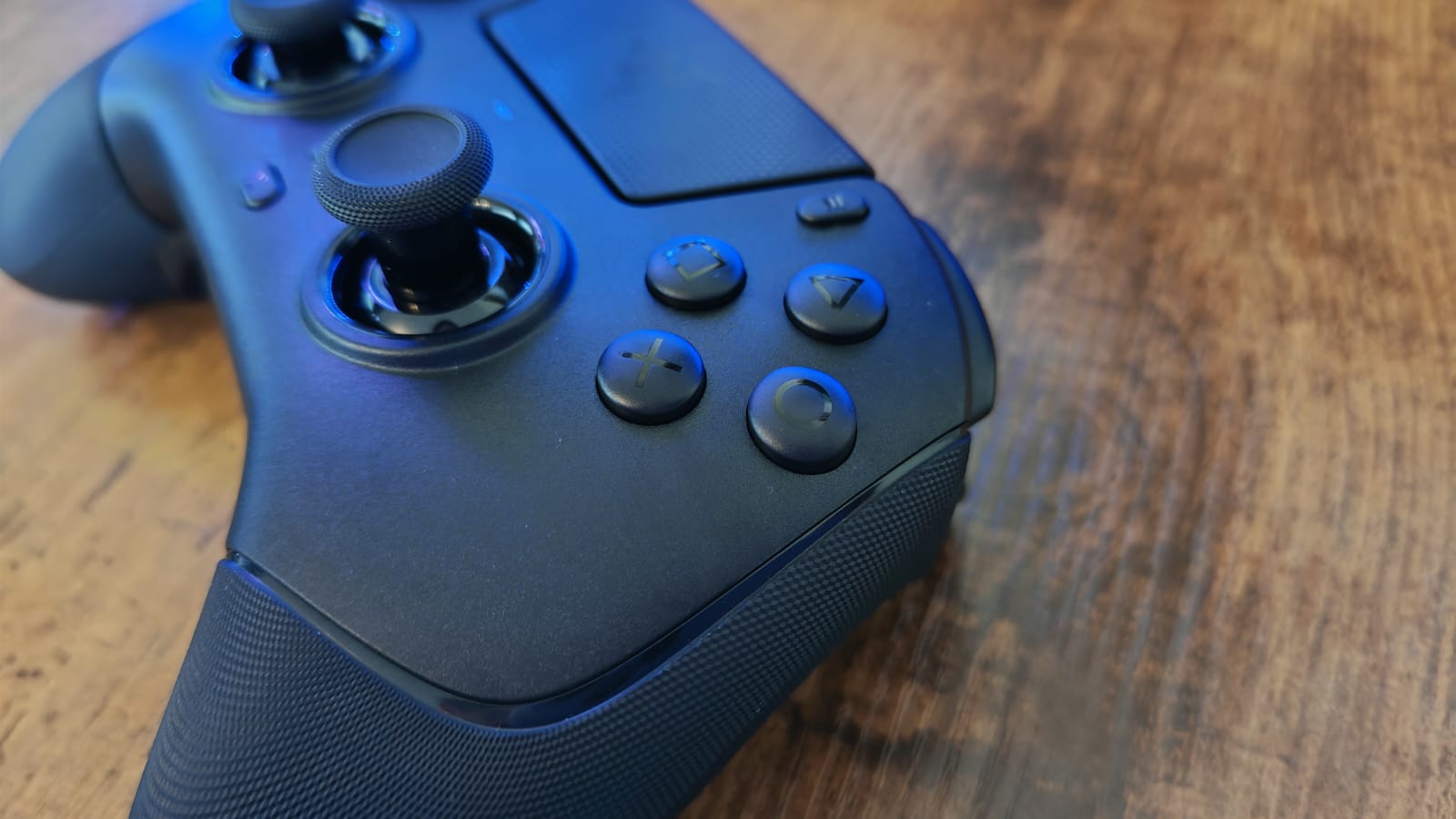
Almost every officially licensed PS5 Pro controller made by a third party feels like it's trying to be an Xbox controller in disguise. There's definitely a place for debating the benefits and drawbacks of asymmetrical and symmetrical thumbsticks, but PlayStation controllers have always had symmetrical ones. I think it's a fair comment to say that this type of gamepad is an intrinsic part of PlayStation's DNA, and although the Xbox controller fanbase tends to be a little louder in online forums, there are loads of gamers who prefer the symmetrical layout that PlayStation gives them.
I'm not sure I prefer one over the other these days, but I know I love symmetrical controllers, and it pains me that you really don't see many of them in this day and age.
The first reason that I love the Raiju V3 Pro is that it doesn't feel like it's forcing the Xbox layout onto PlayStation gamers. This makes the Raiju feel so authentic to PlayStation, and it's bizarre that five years into this console generation, it feels like it's filling a gap in the market as a result.
The new Raiju is available in all black or in a black and white color, which arguably fits in with the rest of Sony's own PS5 hardware a bit better. It feels very similar to the Razer Wolverine V3 Pro thanks to its use of a lot of the same features, but it doesn't feel like an Xbox controller. Longer grips, a very distinct set of triggers, and that signature touchpad and PlayStation Home button make it feel like a PlayStation gamepad, not something that's been ported over from Microsoft's platform.
Weekly digests, tales from the communities you love, and more
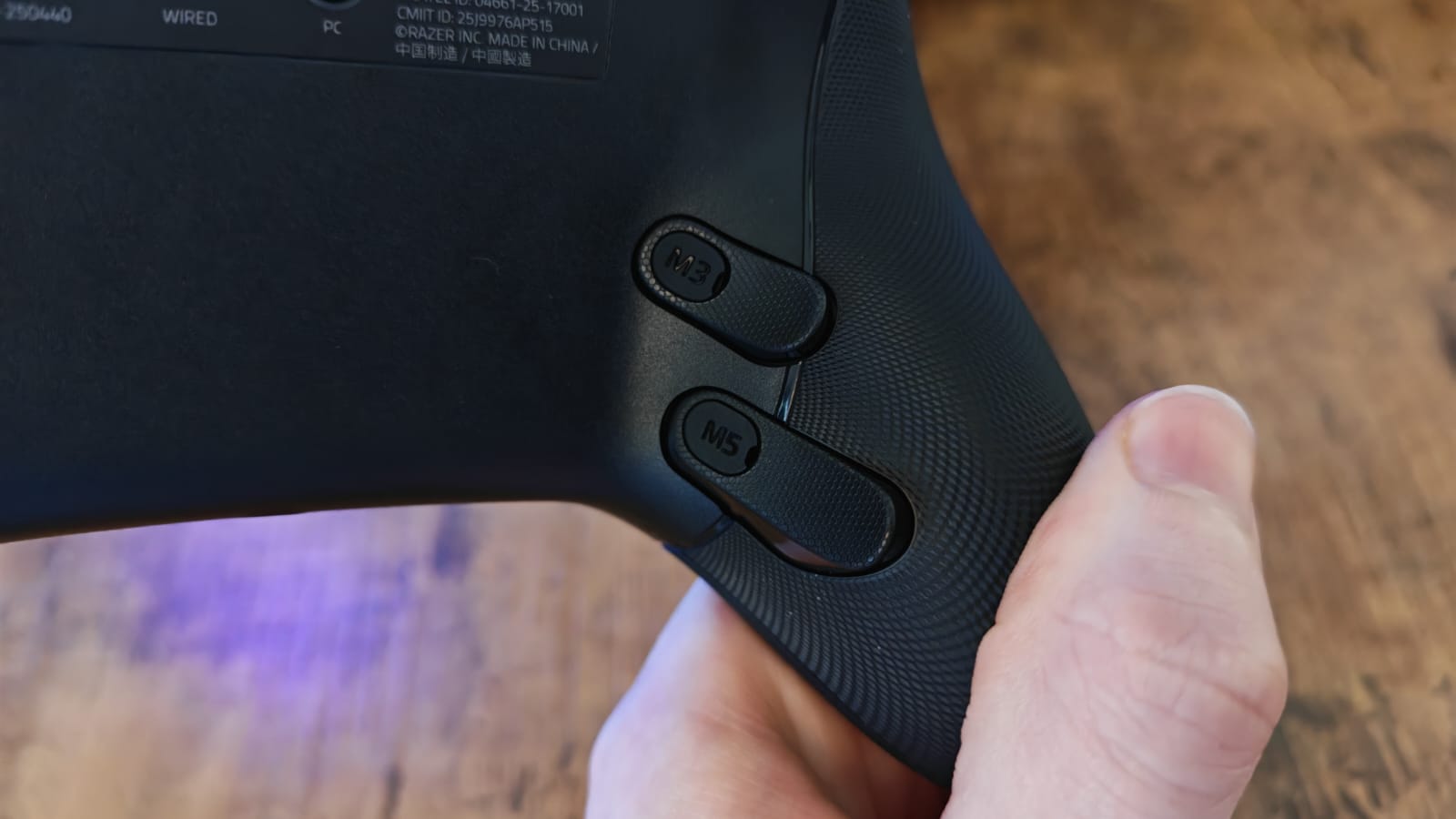
The same rubberized grips are here as they are on the Wolverine V3, although they don't feel as premium as they do on the Xbox version, for reasons I'll come onto shortly. One of the biggest design flaws for me has to be the D-pad, which feels a lot more floaty compared to the Wolverine's. In fact, it feels as out of place and spongy as the one on the Razer Wolverine V2 Pro, and it's maybe the only part of the controller I'd happily swap out.
There are six extra buttons here - four back buttons and two extra bumpers. Thanks to elongated grips, the back buttons are sublimely comfortable, even more so than the ones on the Wolverine V3. The way that they're shaped means that my middle fingers sit on the top ones, and my ring fingers sit on the bottom ones. However, my middle fingers wrap around the grips so comfortably that I can easily actuate the bottom pair of back buttons with the tips of my middle fingers, and the top set with their inner knuckles.
I've never found another controller with four back buttons placed in such a comfortably versatile way, and although it might take you some re-learning if you've used back buttons differently in the past, this is a truly excellent method I'd recommend giving a try. Hats off to Razer's product engineers - I'm not even sure this was an intended bit of design, but it gives the Raiju V3 Pro an entirely different way to be enjoyed.
Features
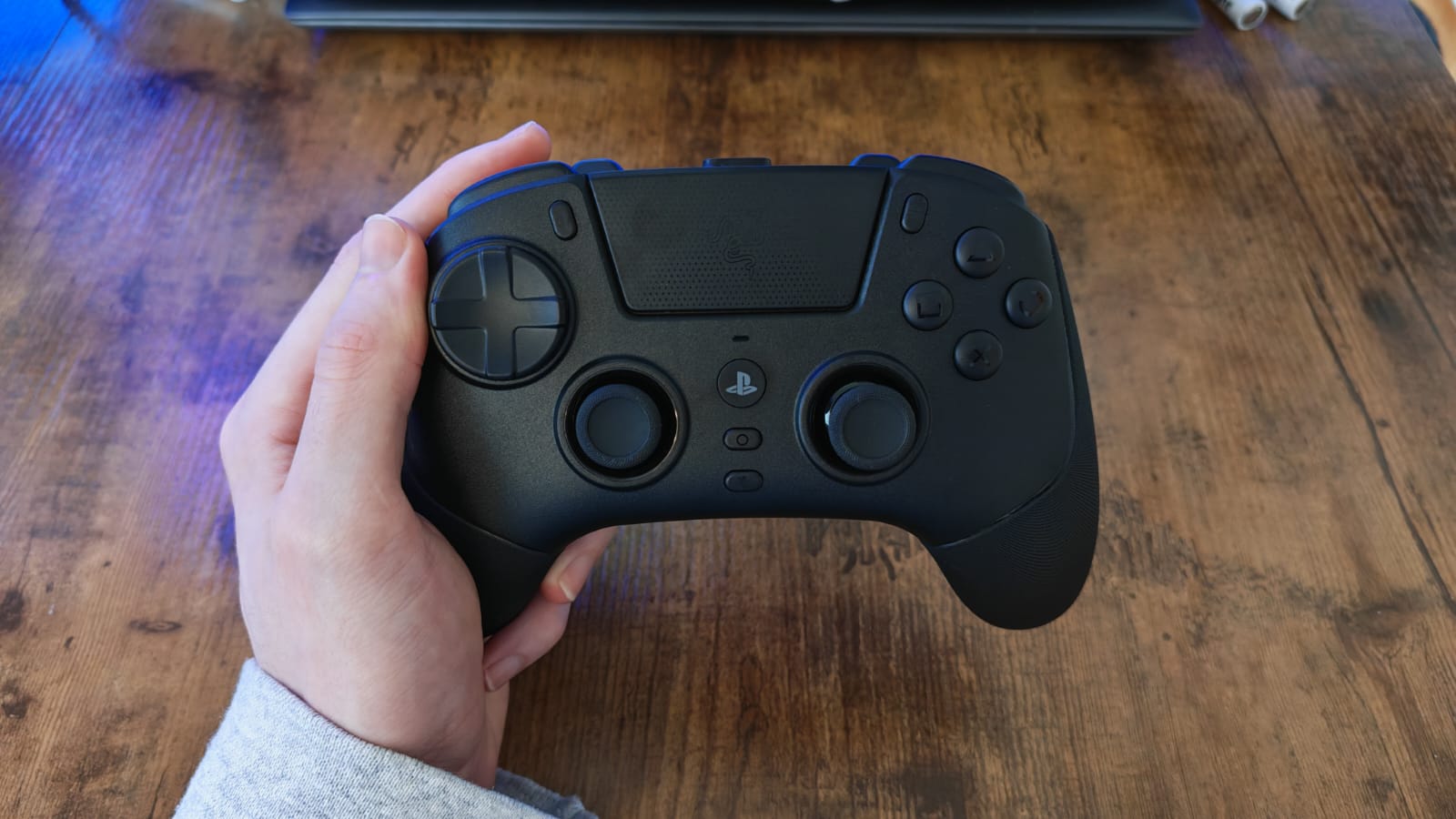
To really explain the biggest downside about the Raiju V3 Pro, I need to talk to you about licensing parameters.
When a third-party brand enters a deal with PlayStation or Microsoft to make a controller, they have certain criteria they have to stick to. Third-party Xbox controllers, until recently, weren't able to be wireless if they weren't homemade by Xbox. That meant a lot of limited functionality, and for whatever reason, Xbox laxed that part of its licensing. All of a sudden, we saw an influx of wireless Xbox controllers with charging stands and excellent features, and it was a huge quality-of-life bonus for anyone looking for a new Xbox Series X controller.
One of PlayStation's licensing parameters this generation is that third-party controllers cannot have any type of haptic feedback or rumble. This is to bolster the strength of the DualSense and DualSense Edge, and make their Haptic feedback something that only first-party pads have access to. That's been incredibly annoying up until now, but testing the Raiju V3 Pro is the first time I feel as though this licensing parameter is really limiting the hardware that's being made for PlayStation's platform. Not having the haptics, I can maybe understand, but not even having rumble leaves the Raiju feeling cheap, lightweight, and lacking in a premium feel that I'd argue players should get for their $200 price of entry.
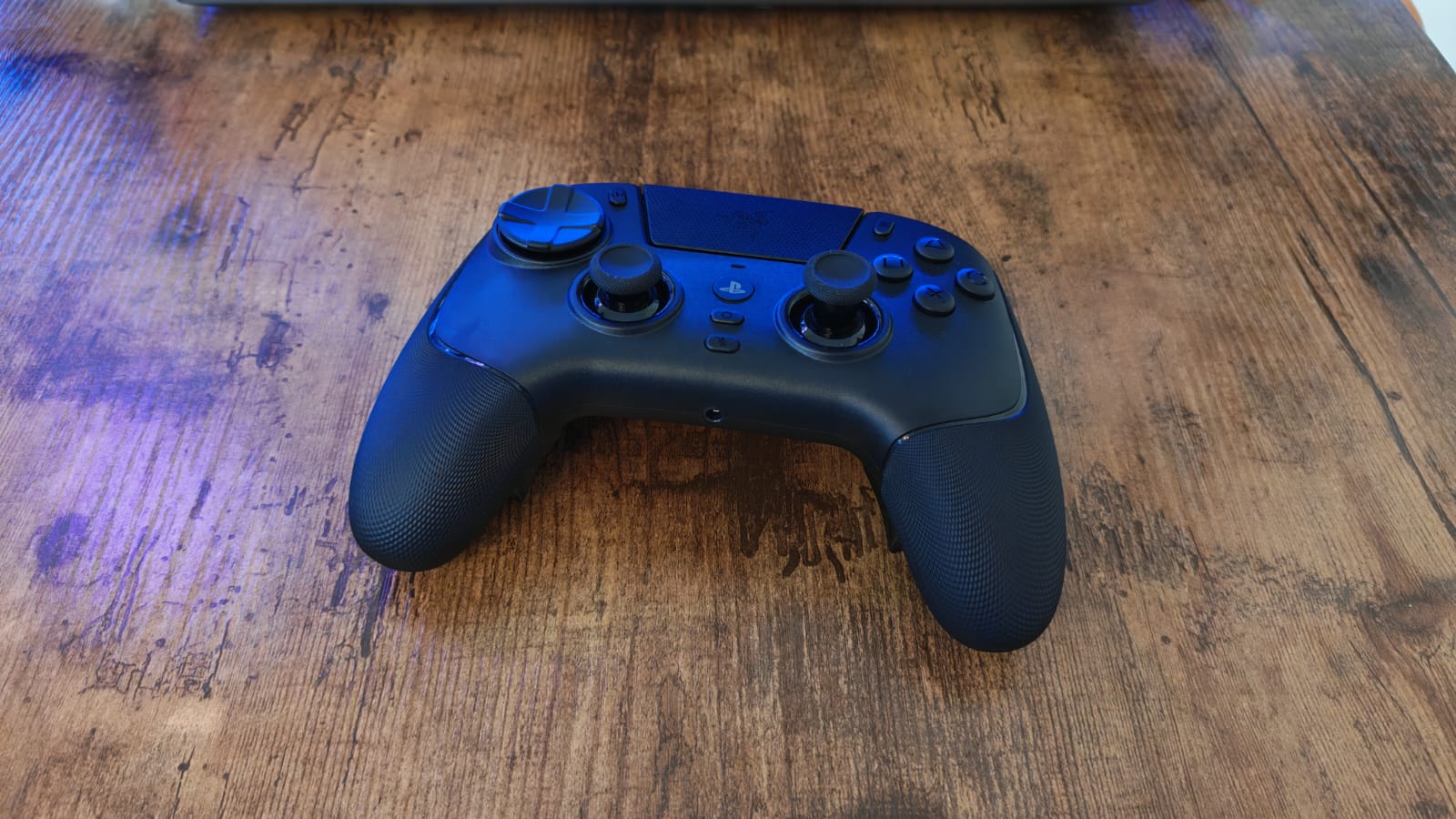
All that to say, the Raiju V3 Pro doesn't have any rumble motors, vibration, or feedback, and that's a real shame, because compared to the Wolverine V3 controllers, its grips feel a bit more hollow. I did hope that Razer might follow the lead set by the Nacon Revolution 5 Pro and make it so that when in PC mode, rumble motors in the grips come to life, but that isn't the case here.
It's the first TMR controller on PlayStation, and with six extra buttons working alongside its thumbsticks, that makes it a FPS enthusiast's must-have.
What the Raiju does feature is TMR thumbsticks, making it the first TMR controller to land on the PS5 platform. Unfortunately, the polling rate of this controller tops out at 500Hz, which doesn't live up to the more recent Xbox controllers that sport a 1,000Hz speed. Most players won't notice a difference, and using a wired or wireless connection, I never noticed any latency or lag spikes from the Raiju - in fact, the wireless connection, thanks to the 2.4GHz wireless USB dongle, felt very strong. It's a shame this doesn't have the competitive might of the Wolverine V3 Pro 8K, or even the 1,000Hz polling rate of the regular Wolverine V3, since these speeds can really harness the power of TMR thumbsticks. Still, I think people will notice the benefits of TMR tech in this peripheral regardless.
The buttons on this controller all feature excellent microswitch feel, and that's because Razer has once again pulled from its experience with the best gaming mice and best gaming keyboards. Raiju's buttons use the same PBT that's used in Razer's Esports keyboards to give them a super responsive and clicky actuation, but a cushioned and comfortable press that provides feel. For me, these buttons are up there with the Nacon Revolution X Unlimited in terms of their premium feel. I think Nacon's lighter actuation takes the cake, but the Raiju V3 Pro feels just as speedy and responsive as the Wolverine V3 Pro.
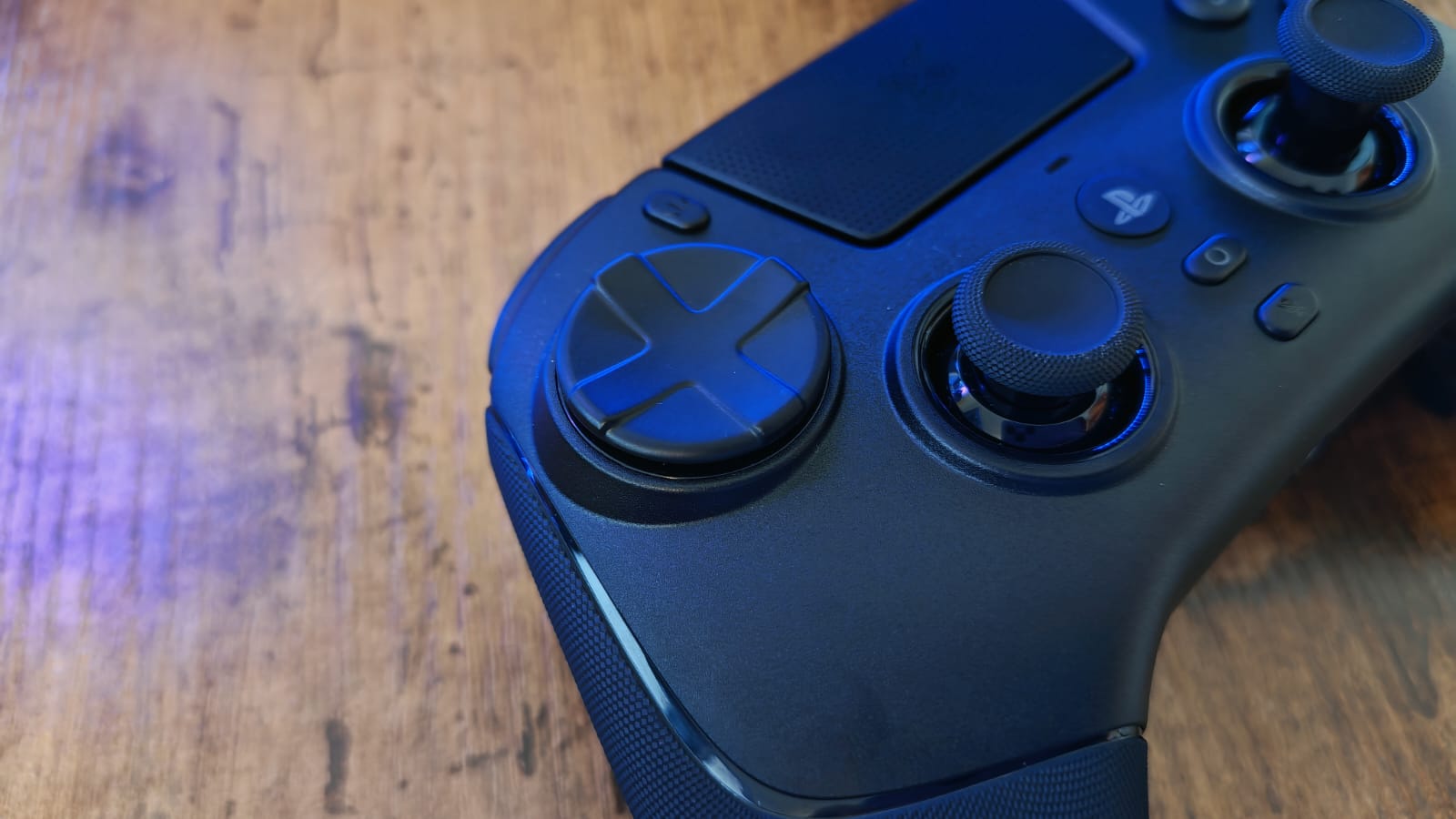
The four back buttons have a great clicky microswitch feel too, but if you don't want them, they're completely removable. I love this option for folks who aren't big fans of using back buttons, but it's also a brilliant feature for accessibility purposes. I do think Razer missed a trick here, however. Having removable buttons presents the opportunity for more customization. With a carry case included, I'd have loved a more modular outlook to the controller that matches up with the Victrix Pro BFG, or even the DualSense Edge. Providing some different back button shapes or mechanisms would have been a serious perk, but alas, there aren't any.
In the carry case, you do get a few thumbstick toppers, but again, it feels as though Razer has been stingy for that $219 price tag. I use the long option on the right thumbstick for more sensitive aim, and the standard small size on the left stick. Admittedly, that means the left one feels tiny, and the only other option is a domed-shaped, slightly taller one in the box.
Customization is done through either Synapse or the Razer controller app. I used the mobile app during my tests because I really try to avoid Synapse at all costs, and I felt like it was conclusive enough for PS5 players who don't want to have to find a PC to customize their PS5 controller. With options for button mapping (although this can be done without any app or software using button combinations), deadzone calibration, profiles, and more, the app catered to all my needs, and it was pretty easy to connect to as well.
Performance
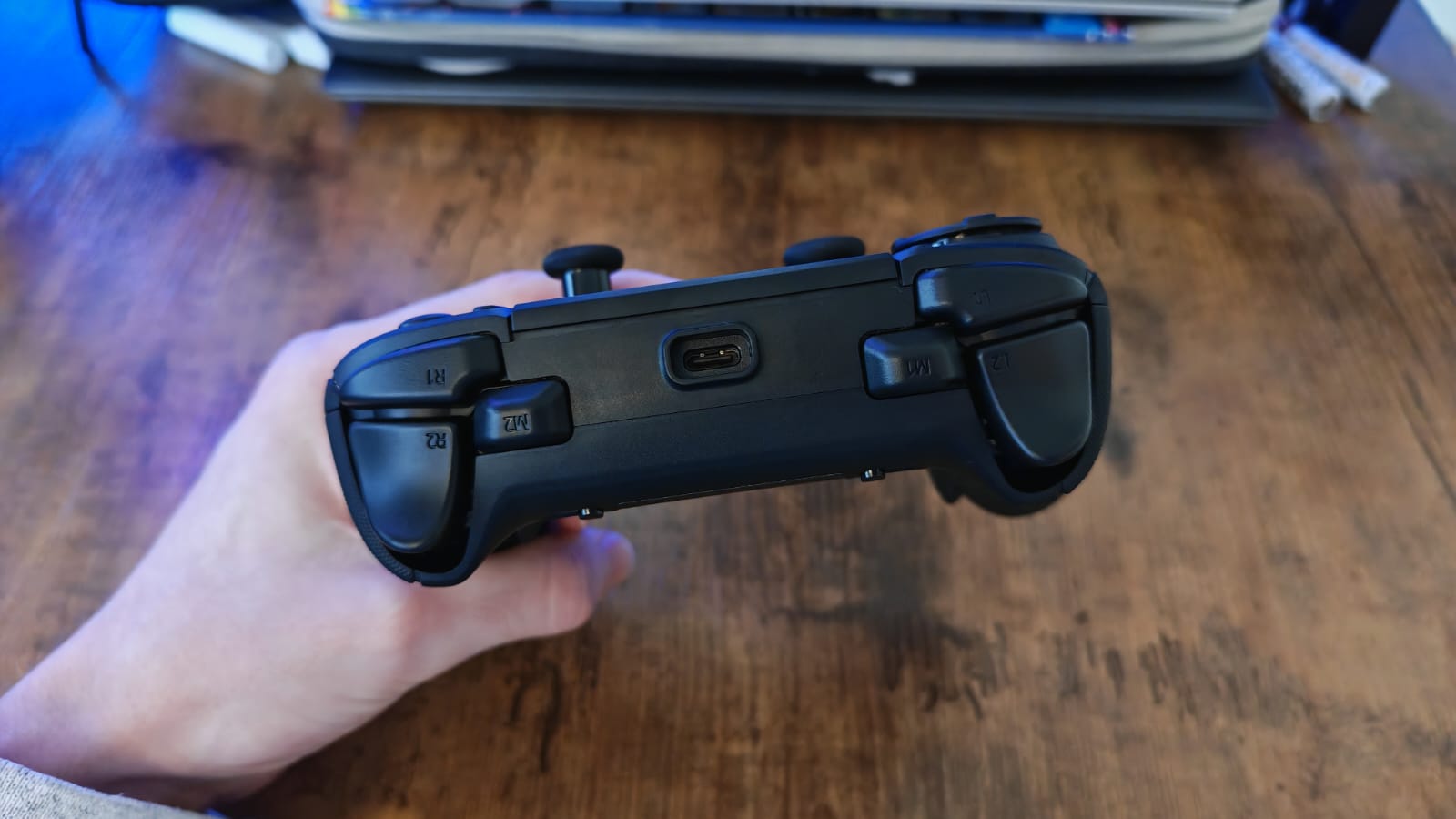
I think I must have said this in every review for a TMR thumbstick controller up until now, but there really isn't anything like using this technology for first-person shooters. Playing Cyberpunk 2077 and Hunt: Showdown, this controller is one of the absolute best I've tested in this genre. There's a feeling of pinpoint precision when aiming that, even more so than with Hall Effect sticks, they pick up on your every tiny adjustment and movement.
This controller feels even more enhanced thanks to its four back buttons and two additional bumpers. Even in those two testing games, where there's a heavy control scheme of lots of different in-game functions, my thumbs barely had to leave the sticks. I felt fluent from the get-go with this controller in FPS titles, and it's one I can thoroughly recommend to competitive players on PS5 and PC.
There's also a lot of comfort to be had from playing with the Raiju V3 Pro. Thanks to those longer grips, it's especially welcoming for bigger hands, and the multiple ways of actuating the back buttons I was talking about in the Design section mean it works equally well as a sit-back-and-relax controller in a less competitive game. I still revisit Top Spin 5 from time to time, and I was surprised by how well the Raiju pivoted from an ultra-competitive FPS controller to a comfortable, cozy gaming peripheral. The same was true when driving around in Cyberpunk. Suddenly, longer trips across Night City didn't feel cumbersome, and I'd happily go on roadtrips with the Raiju in my hands.
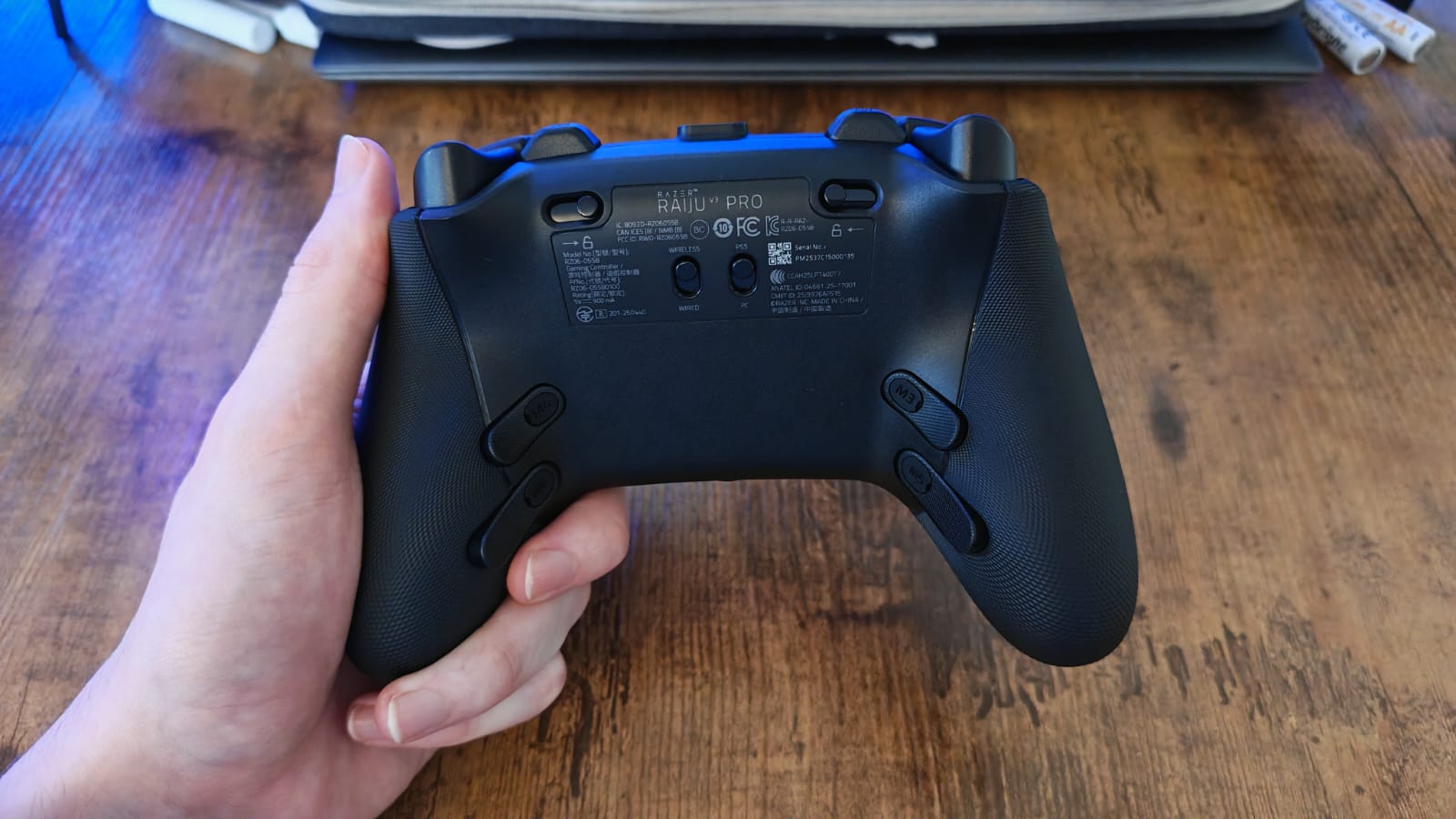
The speedy responsiveness of this pad felt incredible in Dragon Ball: Sparking Zero. Just like with the Wolverine V3 Tournament Edition and its full-fat Pro model, the speedy actuation of Razer's mouse and keyboard switches came to life in a button-mashing game like this. This is a game I wouldn't typically get a lot of back button use out of, but that only gave the face buttons a chance to shine. I really like the feel of these buttons, and even if their actuation can feel a bit heavy when you first unbox the controller, in sweatier play sessions, I never noticed that as an issue.
Their responsiveness is a massive benefit in 2D platformers like Towerfall Ascension, where the slightest split-second reaction could be the difference between life and death, and the slightest inaccuracy in the controller can cause a lot of frustration. I had a few close calls while testing the Raiju V3 where I felt the speedy actuation was genuinely saving me. With a lesser controller, I get the opposite feeling, but the speed of this controller's buttons is not to be underestimated in fast-paced 2D games.
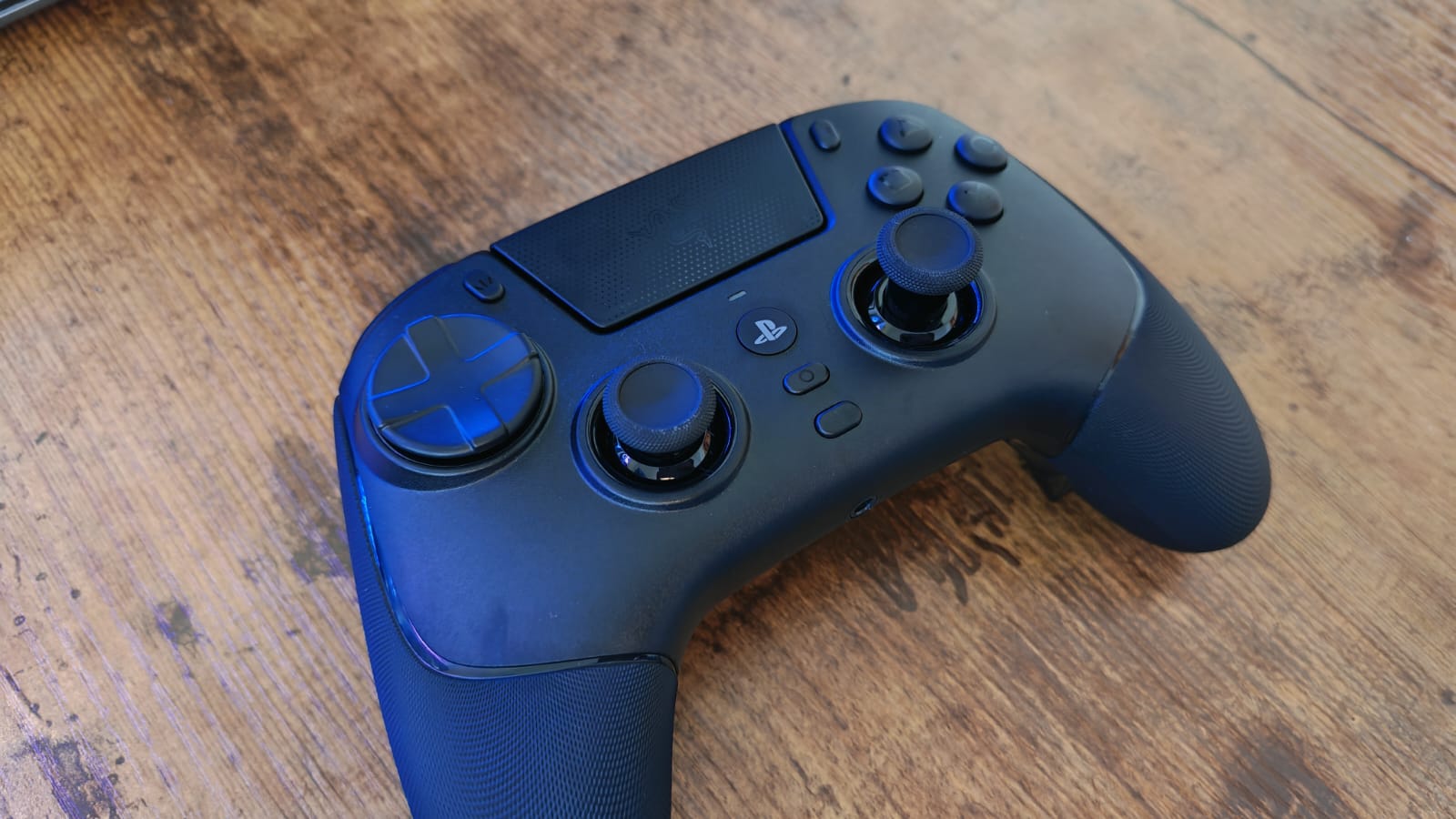
What is a little disappointing is the floating D-pad. While it's nice to have pronounced diagonals, I don't like that it slides across in the directions you're pressing, rather than being pushed down. It feels too slippery for my liking and makes the controller feel a bit cheap.
All in all, this is a controller that's really difficult to fault. I'd have loved some more modular aspects, or at least a couple of more detachable thumbsticks and back button options at the least. While I can appreciate that not every user will require that, the competition supplies things like that for a similar cost. The biggest unshakeable flaw, however, is the lack of any feedback. Razer has made a great controller despite rumble missing, but that's the thing that would elevate this pad to the highest levels.
Should you buy the Razer Raiju V3 Pro?
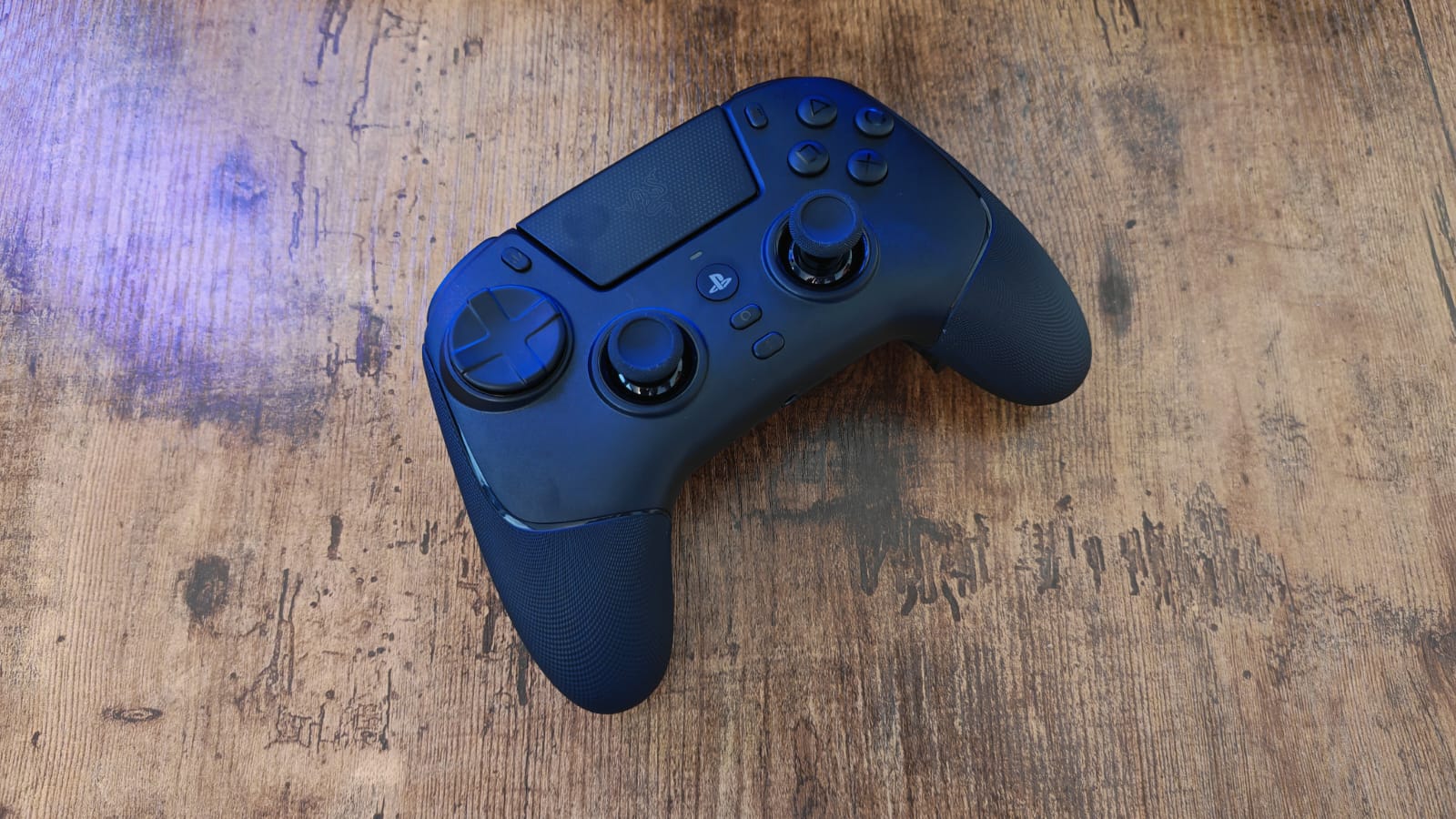
Even if it doesn't quite take the top spot from the Victrix Pro BFG's versatile, modular Esports design, the Raiju V3 Pro is a fantastic controller that has shot right to the top spots on the PS5 controller leaderboard. It's the first TMR controller on PlayStation, and with six extra buttons working alongside its thumbsticks, that makes it a FPS enthusiast's must-have.
What's maybe even more important is that Razer has managed to bring the latest specs and features of the best PC controllers in 2025 to PlayStation without the end result feeling like an Xbox controller. The Raiju V3 Pro feels authentically PlayStation and caters to folks like me who love symmetrical thumbsticks.
It's a shame that the biggest flaw is something that was out of Razer's hands. When you compare the number of third-party controllers on Xbox with that of the PS5 in the last few years, the PlayStation side of things has been really quiet, and that's a shame. Whether that's by design, because of a renewed strategy from Xbox, or because of difficulties with securing licenses, it's a shame. Having more controllers to choose from can drastically improve the quality of life for a console. I can't help but feel that the PS5 is limited because of its smaller gamepad offering, and I really believe that if PlayStation changed a few licensing parameters, that might not be the case.
How I tested the Razer Raiju V3 Pro
I swapped the Raiju V3 Pro into my gaming setup for about two weeks before writing this review. In that time, I used it as my main gamepad for all sorts of genres. From FPS games, to a standby controller for driving around in Cyberpunk 2077, to my usual tests in fighting games and 2D platformers in titles like Dragon Ball: Sparking Zero and Towerfall Ascension, I used the Raiju for all sorts of gaming tasks to see how it fared.
For points of comparison, I used the Razer Wolverine V2 and V3 Pro controllers, as well as other TMR controllers I've tested so far.
For more on how we test controllers, take a look at the full-length GamesRadar+ Hardware Policy.
Do you play on a different platform? Check out the best Nintendo Switch controllers, the best PS4 controllers, and the best Xbox One controllers.
One of my earliest memories is playing SuperMario64 and wondering why the controller I held had three grips, but I only had two hands. Ever since I've been in love with video games and their technology. After graduating from Edinburgh Napier University with a degree in Journalism, I contributed to the Scottish Games Network and completed an Editorial Internship at Expert Reviews. Over the last decade, I’ve been managing my own YouTube channel about my love of games too. These days, I'm one of the resident hardware nerds at GamesRadar+, and I take the lead on our coverage of gaming PCs, VR, controllers, gaming chairs, and content creation gear. Now, I better stop myself here before I get talking about my favourite games like HUNT: Showdown, Dishonored, and Towerfall Ascension.
You must confirm your public display name before commenting
Please logout and then login again, you will then be prompted to enter your display name.
